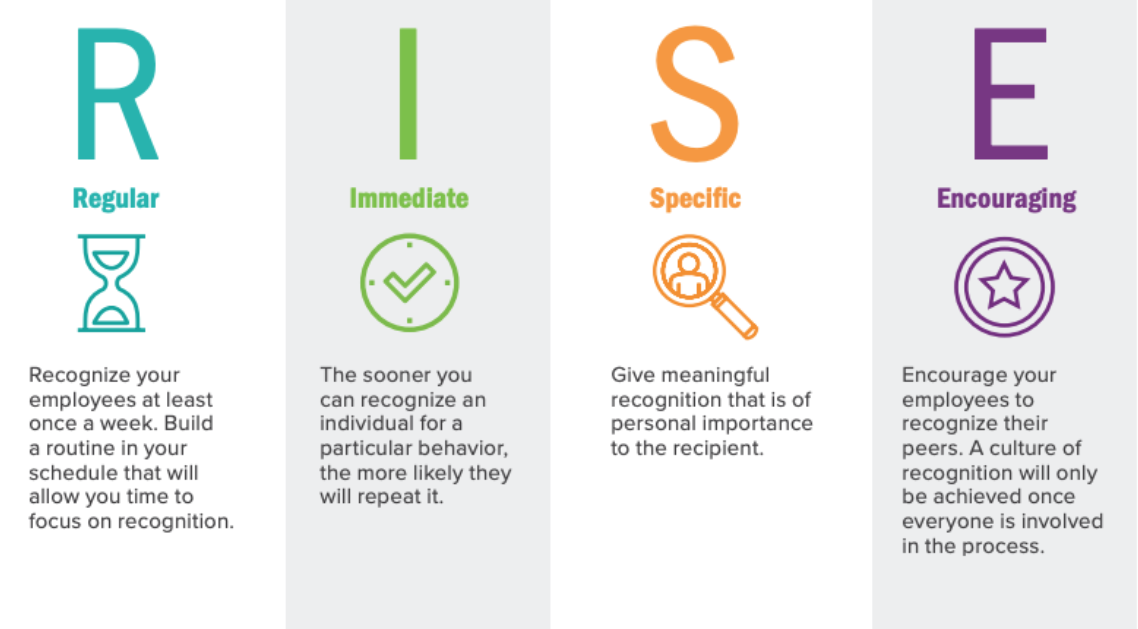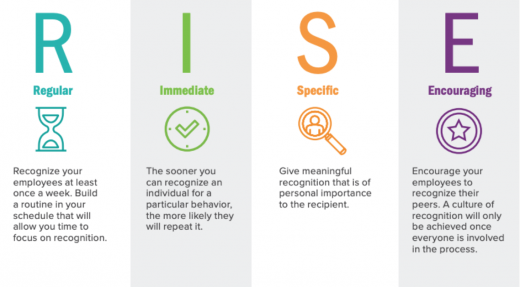How to Respond to Compliments at Work: Examples and Tips
Few things can transform your day like receiving a compliment — or giving one. But these interactions can be difficult to navigate, if you can even find the time to initiate them. Considering how to accept praise gracefully, whether you should return the compliment, the best way to avoid miscommunication — the recognition process can be anything but simple.
Making the compliment experience a positive one can have a huge impact on your performance, and that of your organization. Take a look at these example compliments, tips on how to respond to them, and some best practices for providing recognition of your own.
Responding to compliments at work
Compliments can come up at almost any time — during a meeting, after a chance encounter in the hall, or even when working remotely! But there are some basic principles that will let you handle compliments no matter when you receive them.
First, keep in mind what compliments mean. Maybe you don’t believe that you aced your last presentation, or that you’ve been providing exceptional customer service lately. But quibbling with a compliment isn’t productive, and in fact, it reflects a basic misunderstanding. The importance of a compliment isn’t tied up with its content, but with its intent. The person recognizing you is trying to show you how much they appreciate you. Tell them thanks, and let them know you appreciate their compliment in return.
This may not be easy, but if you practice it consistently, it will become natural in no time. Here are some ways to effectively respond to compliments in a variety of circumstances.
Recognition from a peer
“Thank you for the kind words. It means a lot to me.”
“I really appreciate you reaching out to me. Thanks so much.”
Peer recognition can mean just as much — or more — than compliments from managers or other leaders. It’s the foundation on which a culture of recognition is built, and it can enhance employee performance by up to 14 percent.
When you receive praise from a coworker, they might be acknowledging your skills, achievements, or just your personality! However they’re showing that they appreciate you, each compliment is another chance to strengthen the bonds between team members. Making connections with your peers makes your job easier and much more pleasant, so seek to pass the recognition on by complimenting coworkers in turn.
A compliment from a leader
“Hearing that from you is amazing. Thank you.”
“Thanks, I’m thrilled you like the project! I was happy with how it turned out too.”
While a compliment from a peer is always welcome, there’s something special about receiving recognition from a leader, whether it’s your manager or even one of your organization’s executives. The best leaders serve as examples for all team members, and showing appreciation is no exception.
Appreciation from leadership might be particularly impactful, but that doesn’t mean you should respond to leaders’ compliments any differently. Don’t shrink from their praise because of their position. Instead, focus on the intent behind their praise, express appreciation for the compliment, and keep the cycle of recognition going by providing further compliments yourself, whether as part of your response or later on.
Thanks for a group project
“Thank you so much. It was a team win! I’ll be sure to pass on your praise during our next meeting.”
“Wow, thanks! I’ll email the team right away — they’ll be so happy to hear their hard work paid off.”
Many of your tasks aren’t solo efforts. Whether you’re part of a formal working group or simply standing on the shoulders of giants, your achievements are often a team effort. And that’s a great thing!
Your first priority when receiving a compliment for a group project should be to include your team members, both in your response and by sharing the compliment with them afterwards. But this doesn’t mean you should deflect the recognition or minimize your contributions. After all, you were a part of the winning effort, and you deserve appreciation as much as your coworkers.
Remote compliments
“I’m really glad you liked the presentation! Thank you. Maybe we can have a virtual coffee chat to catch up and celebrate.”
“Thanks for that! Let’s schedule a video chat with the whole team so you can share your praise with everyone who contributed.”
Remote work comes with many benefits — flexibility in work arrangements, reduced overhead, and the ability to hire talent from anywhere. But it can also make staying connected to your organization and team more difficult, especially when it comes to providing recognition. After all, you can’t say thanks in the hallway or break room when they don’t exist!
Overcoming the challenges of receiving and providing compliments while working remotely is more than worth it. Adopt an employee recognition platform designed with a mobile-first philosophy to let employees incorporate appreciation into their everyday routines, no matter where they are or what they’re doing.
When you get a compliment while working remotely, it may be through a recognition platform or by email, chat, or video call. Regardless of how you were recognized, you can accept it with mindfulness and appreciation, just as you would if you were thanked in person. Use an appropriate channel to respond to the recognition, letting the recipient know that you’re grateful for their praise. And if your organization has embraced employee recognition software, then you can use it to easily pass the recognition on by showing gratitude to the team member who thanked you or another coworker.
Giving compliments at work: keep the cycle of recognition going
Receiving compliments is a key part of building a culture of recognition, but providing recognition in turn is just as important. To make recognition as impactful as possible and turn it into a core part of your organizational culture, follow the principles of R.I.S.E:

These principles are effective at an individual and organizational level. You should show recognition frequently, for both major wins and everyday successes, rather than reserving kudos for only the biggest victories. And if you provide appreciation quickly after the specific behavior you’re recognizing — and clearly link it to that behavior — the recipient is more likely to take that action again in the future. Follow these best practices and you’ll see that a small seed of recognition can grow quickly, improving morale, engagement, and performance across your organization.
Make compliments simple by trying a free demo of Achievers Recognize today.
Business & Finance Articles on Business 2 Community
(81)


